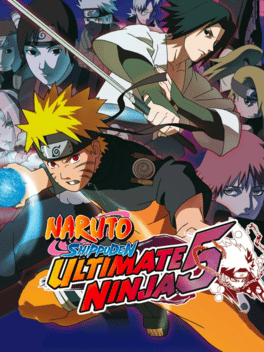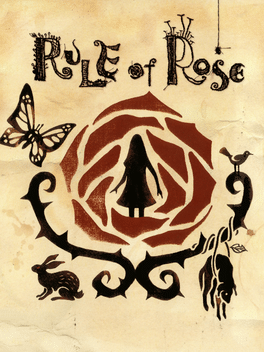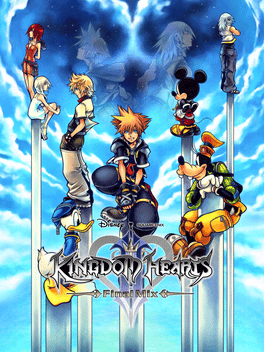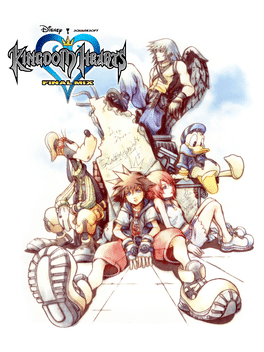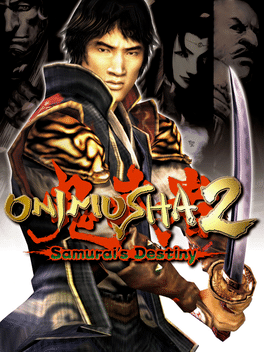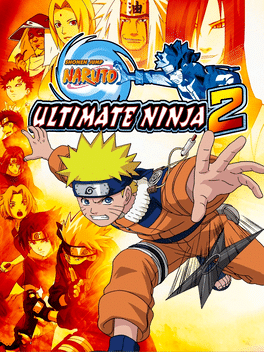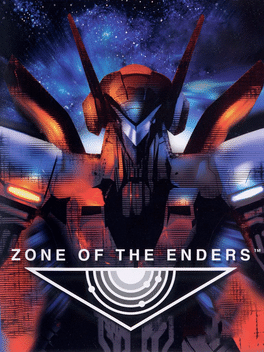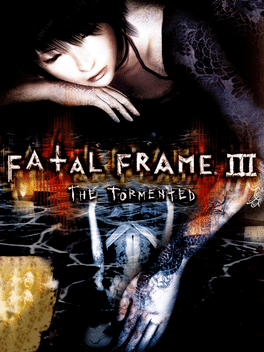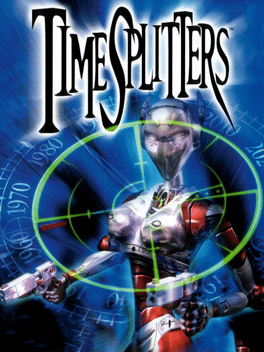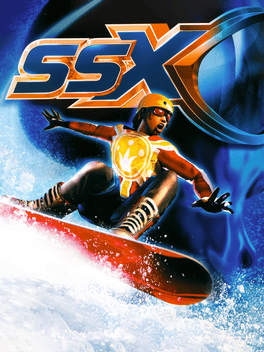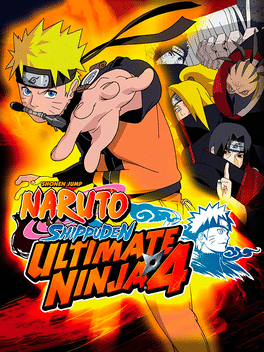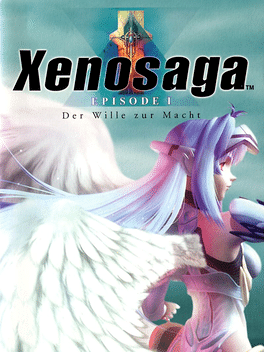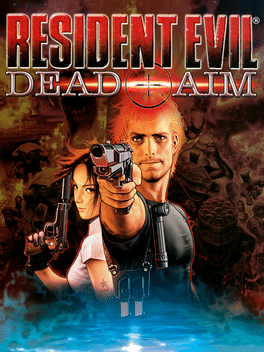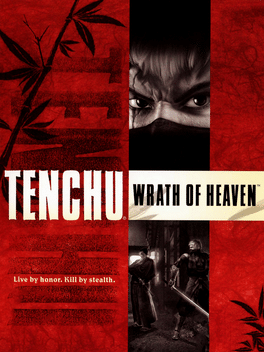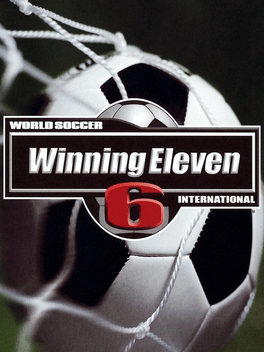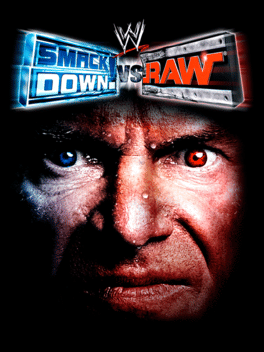Most Popular Playstation 2 Games - Page 3
-
Naruto Shippuden: Ultimate Ninja 5
2007
star 6.9This is the fifth installment in the Naruto: Ultimate Ninja series. The game continues the Naruto Shippūden storyline, and includes the first meeting between Sasuke and Naruto during this timeline. -
Rule of Rose
2006
Rule of Rose
2006
star 6.8Rule of Rose is a survival horror game in which the player, who controls Jennifer, explores the game environments and furthers the plot by accomplishing tasks and experiencing cut-scenes while sporadically encountering enemies and bosses. Taking place in England in 1930, Rule of Rose centers on Jennifer, a young woman who is led to an abandoned orphanage by a small boy. -
We Love Katamari
2005
We Love Katamari
2005
star 8.8We Love Katamari, is a third-person puzzle-action video game where the player controls the Prince, the 5-centimeter-tall son of the god-like entity the King of All Cosmos, who rolls around a "katamari", a magical ball that causes objects smaller than it to attach to it. Throughout each level, the play must collect objects in order to fulfill objectives set by the prince's father. -
Kingdom Hearts II Final Mix
2007
star 8.6In September 2006, Square Enix announced Kingdom Hearts II Final Mix, featuring new scenes and gameplay elements. Like the first re-release, this version would combine English audio with Japanese text and also use the "Sanctuary" theme song instead of "Passion". New cutscenes, however, used Japanese voice acting, as they mostly featured Organization XIII members from Kingdom Hearts: Chain of Memories who did not yet have English voice actors; these scenes were later re-dubbed into English for the HD 2.5 Remix release. -
Dirge of Cerberus: Final Fantasy VII
2006
star 6.3Dirge of Cerberus: Final Fantasy VII is an action role-playing third-person shooter. As the first shooter game in the Final Fantasy series, the action is viewed from an over-the-shoulder perspective similar to Resident Evil 4, although players can switch to a first-person perspective if they wish. Defeating enemies yields EXP, and at the end of each stage, the player can either use that EXP to level up, increasing Vincent's stats, or convert it to Gil (the in-game currency), which can then be used to purchase items and equipment upgrades. -
Kingdom Hearts Final Mix
2002
star 7.7Originally released only in Japan on December 26, 2002, Kingdom Hearts Final Mix has several events and a number of gameplay tweaks that are not in previous releases. Spoken dialogue is in English, with Japanese subtitles. New scenes, clarifying certain plot points, such as Riku's journey and foreshadowing of Kingdom Hearts II, were included, but no new dialogue was recorded. A gameplay option allows the player to skip cutscenes after seeing them once. The optional bosses first included in the English version were introduced to Japanese players for the first time, along with a new fight against "Unknown Man," in an attempt to raise interest for the sequel. -
Onimusha 2: Samurai's Destiny
2002
star 7.8Onimusha 2 is the second installment in the Onimusha series of video games released in May of 2002. The game retains the action elements from its predecessor such as the use of multiple special weapons that can be upgraded by defeating enemies. Apart from the main character, the game features four playable sub-characters, each of whom shares a part in the story. The player's actions determine which characters will decide to help Jubei in his quest. These characters were added by the Capcom staff to give a bigger depth to the game and expand the game's feeling of adventure. -
Naruto: Ultimate Ninja 2
2004
star 7.3"The ultimate ninja battle returns! Battle the best in the land with intense, anime-style head-to-head ninja fighting with over 30 playable characters and 16 unique stages. Choose from more than 60 exciting missions, test your skills with challenging mini-games or play through the anime storyline - and even unlock an original story - in the all-new mode, Ultimate Road. Earn money and points to unlock tons of bonus content as you unleash your chakra and ascend the ranks on your way to becoming the greatest ninja of all!" -
Zone of the Enders
2001
Zone of the Enders
2001
star 7.3Take control of a fully armed prototype mechanized robot and fight off enemies during a space colony hijack in Hideo Kojima's Zone of the Enders. In it, players become the character Leo Stenbuck, who sees the consequences of fighting first hand as he learns the true meaning of life and death. Combining state of the art PlayStation 2 graphics, tons of weapons, and an involving storyline, Zone of the Enders also provides a dynamically changing mission structure, a versus mode for two players, and a playable demo of Metal Gear Solid 2: Snake Eater in all first-run production copies. -
Fatal Frame III: The Tormented
2005
star 8Rei Kurosawa suffers a strange dream each night, since she took a photo of her dead boyfriend in an abandoned old mansion. Every night the dream will take her deeper and deeper in an old mansion, when she will have to find out what is going on. -
TimeSplitters
2000
TimeSplitters
2000
star 7.8TimeSplitters is a first-person shooter and the first game in the TimeSplitters series. TimeSplitters features a multiplayer mode, known as "Arcade", where up to four players and ten computer-controlled bots can compete individually, or in up to four different teams in certain modes. There are six multiplayer modes and aspects of each mode - such as the weapons and levels available, the winning condition, and managing characters. The game contains a level editor that allows the player to create their own level from a selection of various pre-made tiles. Light settings of the tiles can be edited individually and items can be added to the map. -
SSX
2000
SSX
2000
star 8SSX is the first in a series of snowboarding video games which specializes in extreme sports titles with an unrealistic or arcade feel, including exaggerated jumps, highly decorated mountain runs and improbable trick. Winning medals in a variety of events unlocks new courses, characters, and boards, as well as improved the boarder's abilities. New outfits may be earned by completing a character's trick book, by doing a number of specific tricks during play. Three kinds of boards are available to players: trick-oriented Freestyle boards, all-around BX boards, and racing-oriented Alpine boards, which are not meant to be ridden backwards. The courses are located around the world. The snowboarders also come from around the world, and speak in their primary languages. -
Naruto Shippuden: Ultimate Ninja 4
2007
star 6.5Ultimate Ninja 4 takes place two and a half years after the end of the original Naruto series. -
Xenosaga Episode I: Der Wille zur Macht
2002
star 7.4Xenosaga: Episode I - Der Wille zur Macht, the first chapter of a trilogy, is a Japanese-style sci-fi role-playing game, sharing many common themes and gameplay elements with Xenogears. The battle system is not unlike the one used in Xenogears (combo attacks, AP and EP gauges, etc.), but random encounters are eliminated. Instead, the enemies are now visible and battles can be avoided. During combat the few upcoming ally and enemy turns are shown onscreen, allowing the player to make strategic decisions based on who will act next. A rolling slot moves with each turn as well, conferring a bonus such as added damage or bonus XP for any action on that turn. If the enemy would be in position to take an advantage then the player can expend a character's "boost" gauge to cut in and act next, although enemies can boost as well, and enemy boosts always over-ride player boosts. Each character has a unique tree of Ether spells they can learn by spending Ether points earned in battle, with lower spells requiring spells above -
Resident Evil: Dead Aim
2003
star 6.5Resident Evil: Dead Aim is a survival-horror game released exclusively for the PlayStation 2 under the Gun Survivor title, which was used for several games made for the Namco light gun controllers. The game is played in two camera angles: the player moves from a third-person perspective while walking, which changes to a first-person perspective while aiming the gun. You'll pick up several guns through the course of the game, including a magnum, a shotgun, and an assault rifle. But like in other Resident Evil games, zombies are difficult to put down permanently and ammo can be very scarce. -
Tenchu: Wrath of Heaven
2003
star 8.1Move like a shadow. Strike like a snake. After amassing an army of ninjas and lords of darkness, the mysterious Tenrai has begun a quest to conquer 16th-century Japan. Now your master, Lord Gohda, has called upon you - a cunning stealth assassin - to stop Tenrai and his disciples before all is lost. Live by honor. Kill by stealth. -
World Soccer: Winning Eleven 6 International
2002
star 8.6Pro Evolution Soccer 2, known as World Soccer: Winning Eleven 6 in Japan, is the second instalment of Konami's Pro Evolution Soccer football video game series. The Japanese version was succeeded by the updated World Soccer: Winning Eleven 6 Final Evolution. It was the last game of the series released in Europe for PlayStation and the only game released for the Nintendo Gamecube. -
WWE Smackdown! vs. Raw
2004
star 7.1WWE SmackDown! vs. Raw brings two of wrestling's most popular game series together on the PS2. The game re-creates WWE programming with voice-overs and commentary throughout the season mode. During matches, you can learn a host of new gameplay moves, such as stare-downs, chop battles, and submission reversals. You can also try out situational challenges or create your own championship. Play as your favorite wrestler, including legends and Divas, and prove to the world that you have what it takes to be the WWE champion. -
Zone of the Enders: The 2nd Runner
2003
star 7.4The sequel to Zone of the Enders is based around mecha combat with the player once again controlling the "Orbital Frame" Jehuty. Unlike its prequel, the game is now centered on action elements with the player not needing to protect civilians in need and instead Jehuty contains more weaponry than in the previous game. The plot is set two years after the events from Zone of the Enders and focuses on Dingo Egret, a former member from Mars' military organization BAHRAM whose leader Ridley "Nohman" Hardiman wants back with him. Nohman shoots Dingo following his rejection but the agent Ken Marinaris saves Dingo by connecting his body to Jehuty and forces to work in order to defeat BAHRAM. The game had a new director, Shuyo Murata, who producer Hideo Kojima appointed in order to provide a different experience. The team worked to cover the criticism the original Zone of the Enders received resulted in The 2nd Runner having more action elements. The game received generally favorable critical response due to the improvemen -
The Getaway
2002
The Getaway
2002
star 7.7The Getaway is a sandbox crime game set in London. It is inspired by British gangland films Get Carter and Snatch. Initially, the release of the game was to coincide with the launch of the PlayStation 2 in 2000, but was delayed by 27 months due to the difficulty of re-creating large areas of London in high resolution. Parts of The Getaway feature in various episodes of Graham Duff's Ideal.
